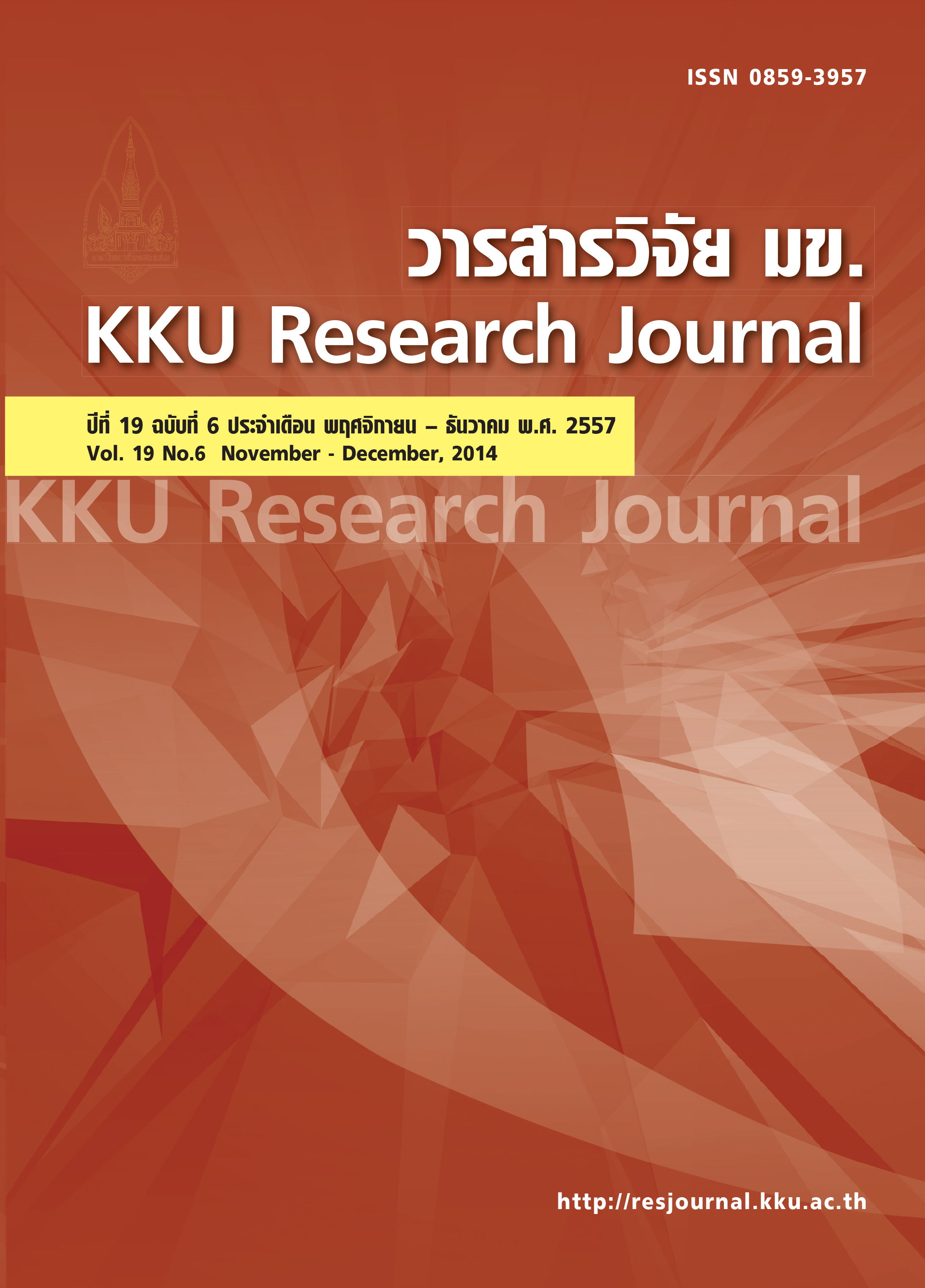Optimal proportions of composites from polypropylene and rubberwood flour after water immersion using experimental design
Main Article Content
Abstract
Mixture experimental design and response surface methodology were used to optimize the formulation of rubberwood fl our-polypropylene composites after water immersion. The mixed materials were formed into panels using a twin-screw extruder. The overall composition, including recycled polypropylene (rPP), rubberwood fl our (RWF), coupling agent, and ultraviolet (UV) stabilizer, signi fi cantly affected on water absorption, fl exural strength (MOR) and fl exural modulus (MOE). The increasing addition of RWF in the rPP composites increased the water absorption. MOR slightly increased with an increase of RWF after 2 weeks of water immersion but it signi fi cantly decreased after 4 weeks. Likewise, MOE of the composites decreased with an increase of RWF after 2 and 4 weeks of water immersion. Furthermore, regression models fi tted of water absorption, MOR, and MOE were used to optimize the proportions of rPP/RWF composites after water immersion, and optimal proportion found was 68.9 wt% rPP, 25.0 wt% RWF, 4.9 wt% coupling agent, 0.2 wt% UV stabilizer, and 1.0 wt% lubricant.
Article Details
How to Cite
Homkhiew, C., & Ratanawilai, T. (2017). Optimal proportions of composites from polypropylene and rubberwood flour after water immersion using experimental design. Asia-Pacific Journal of Science and Technology, 19(6), 780–793. retrieved from https://so01.tci-thaijo.org/index.php/APST/article/view/83057
Section
Research Articles


